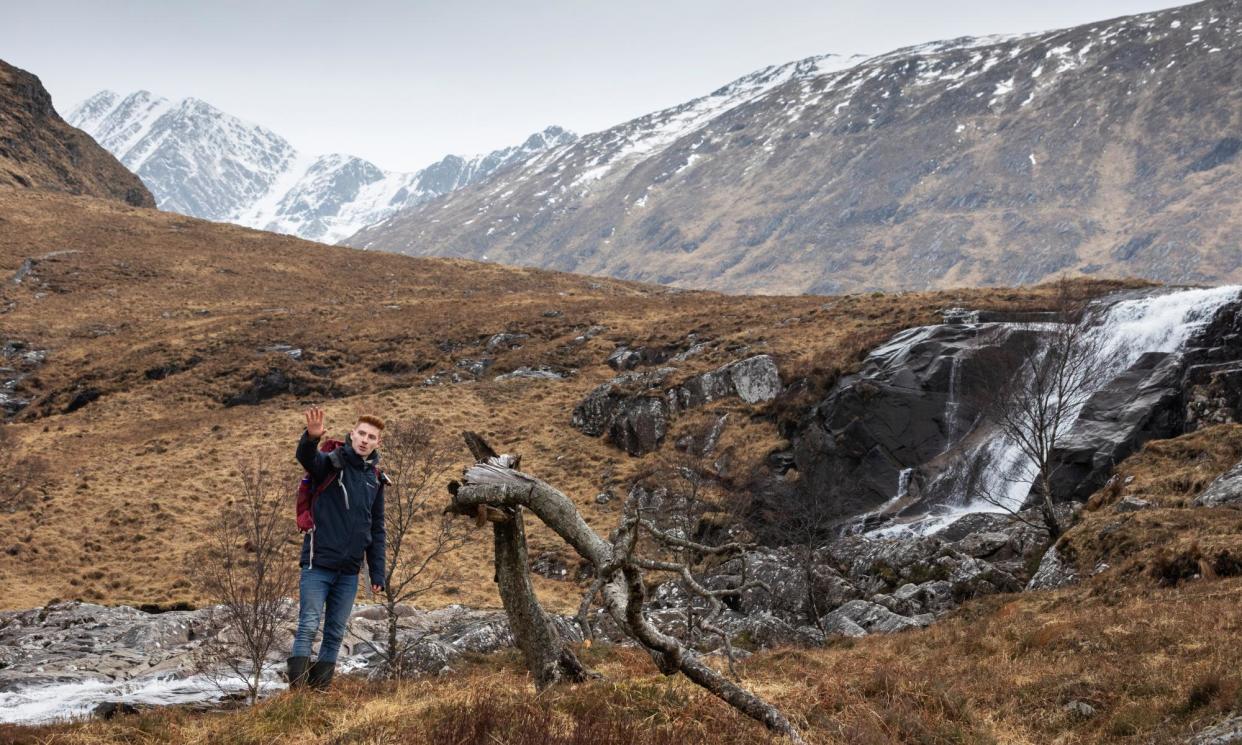Restoration is possible: the hunt for Scotland’s ancient wild pinewoods

James Rainey reads trees like most people read signposts.
The senior ecologist with the rewilding charity Trees for Life is using a small hand lens to identify a particular lichen that is wreathing the base of an aspen tree in a secluded glen on the west coast of Scotland. He is looking for “ecological clues” of species associated with the ancient Caledonian forest that once covered most of the Highlands, like this aspen, certain wildflowers, such as serrated wintergreen, and some lichens, such as black-eyed Susan and Norwegian specklebelly.
Wild pines have been growing in Scotland since the last ice age. This is a globally unique ecosystem that supports rare wildlife, including red squirrels, capercaillie and crossbills. Now less than 2% of the original growth survives, with just 84 individual Caledonian pinewoods officially recognised, having last been documented more than a quarter of a century ago.
But now Trees for Life and Woodland Trust Scotland have become aware of up to 50 other hitherto uncharted wild pinewoods, both from historical documents and anecdotal contemporary reports. The charities have turned tree detectives as they embark on the painstaking process of mapping – and hopefully reviving – these remote pockets of forgotten forest before they vanish for ever.
Rainey says the ecological investigators use three strands of evidence to pinpoint where these pinewoods first stood.
“First there’s the historical evidence, like old maps and texts,” he says. “Rev Timothy Pont, a Church of Scotland minister and cartographer, made incredible sketch maps of the Highlands in the late 1500s, which mention ‘fir woods’ in some areas, the old word for pine woods.”
Related: A mecca for rewilders: the community-led project restoring Scotland’s southern uplands
There are cultural clues too, such as Gaelic place names referring to pine or woodlands.
The first ordnance surveys of the 1800s were remarkably accurate, and often used conifer symbols to represent pine woods. Trees for Life digitised these maps and superimposed the present-day landscape, making it easier to identify where they suggest unplanted or wild pine sites once were.
Rainey says: “Then we look at the landscape context of the site: is the pine associated with planting around a big house for example, or is the setting more natural?
“And finally, we use the ecological evidence: wild pine usually grows alongside old birch trees, while planted pine is often mixed with larch. Many ancient pinewoods also have lots of stumps scattered through them, and certain kinds of plants and lichens that indicate ecological continuity.”
After the last ice age, the pine was one of the first trees to return to Scotland, and there are microfossils in Glen Affric that date from 9,900 years ago. Mainly a tree of the Highlands and uplands, most of its decline has been caused by human deforestation.
“The emphasis after the second world war was on creating strategic resources for Britain, resulting in many areas of the Highlands being ploughed and planted in rows for commercial forestry,” says Rainey. “This was often done with cheap land that included ancient woodlands and it was really devastating to the last remaining trees.”
Restoration is possible, however, especially since some old trees survive along with the ancient woodland soil and seed bank: seeds stored in the soil, which can germinate once the heavy shade of commercial conifers is removed.
On the site we are currently exploring, which ranges along a river gorge, through woodland and commercial forestry then up to a high mountain dam across nearly 10 miles (16km), Trees for Life estimates there are about 85,000 seedlings unable to grow taller because of grazing by sheep and deer. Commercial trees – such as Sitka spruce – are not as tasty to the herbivores, so are usually left alone.
As the gorge deepens, Rainey points out the first indications of ancient woodland: a huge stool with thickly twisted trunks of regrowth, like a petrified octopus clinging to the rocky bank and aged between 400 and 500 years old.
Rainey has identified 23 pines in this area, 17 in the gorge and six on the crags higher up the mountain, all rooted in places least accessible to grazing deer. The needles have been taken for genetic testing to confirm their heritage.
Further along the gorge, we find a clump of pines beside the river, each of them in a uniquely gnarled and complicated shape, unlike the uniform rows of bushy soldiers standing to attention in the commercial plantations.
A few more kilometres in we find a young wild pine, a fresh blue-green in colour, probably a sapling from one of the ancient river trees, and aged about 12 years, according to the nodes that grow annually. It has already been eaten down by deer.
Much further up the mountain, buffeted by an icy wind, a handful of ancient pines are huddled in inaccessible spots across the otherwise bare shoulder.
Rainey says: “This would have been filled with trees but is now empty – these are the most critical areas in need of regeneration and we want the whole of the old growth woodlands to recover, not just the pines, but oak, rowan, birch, alder, hazel.
“In 100 years’ time people could be looking at quite a full woodland on this side of the hill and not believe that it was in such a state of degradation – the capercaillie and wildcat could live in a place like this – so if you want them back too then you have to restore these woods.”


